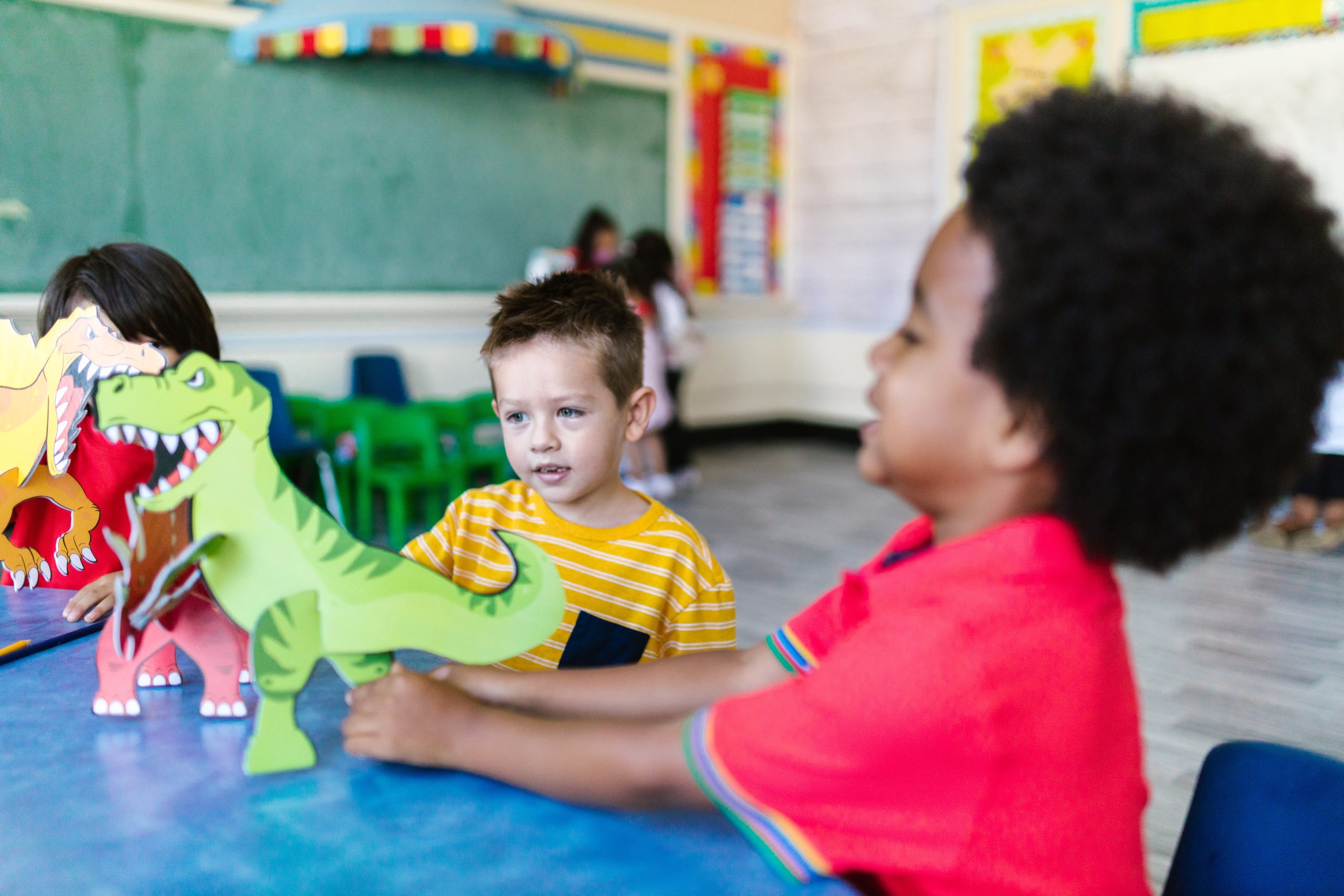Assistive Listening Devices
Assistive Listening devices such as hearing aids, cochlear implants, and FM/RM systems help to meet the needs of children with hearing loss. The goal of all hearing technology is to improve the reception of speech.
When amplification has been recommended by your child’s Audiologist, consistent use is important. The technology recommended for your child is chosen, based on his or her individual needs, the school team’s observations, by the audiologist and in consultation with you, the parent(s).
Factors including the type of hearing loss, the degree of hearing loss, your child’s age and grade level, and their individual listening needs are considered in the decision making process.
Information about the use and care of hearing aids and FM systems should be provided to you by your child’s support team. As technology changes, ongoing information sharing is needed to support your child. For example, if your child receives new hearing aids, his or her FM system may require an upgrade.
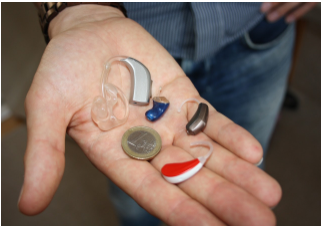
Hearing Aids
Hearing aids are electronic devices that amplify sound. Speech and background noise are amplified by a hearing aid. Hearing aids work best in a quiet listening situation where the distance between the person speaking and the student is six feet or less. As distance and background noise increase, the benefit provided by a hearing aid is greatly decreased.
It is important to keep in mind that hearing aids do not restore normal hearing. They amplify all sounds. They need to be kept in good working condition and worn consistently. A daily listening check of your child’s listening devices is needed to ensure that his or her hearing aids are working properly.
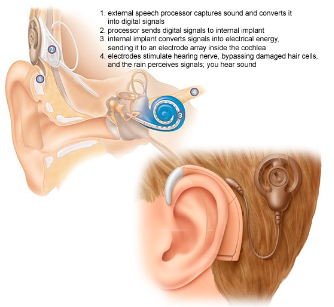
Cochlear Implants
A cochlear implant is a device that is surgically implanted into the inner ear and stimulates the hearing or auditory nerve directly, bypassing the damaged cochlea. It can provide useful hearing for individuals who have a severe to profound sensorineural hearing loss and who receive limited benefit from hearing aids.
A cochlear implant will not restore normal hearing, but it will greatly improve a child’s access to sound.
There are two components of a cochlear implant:
- The internal device consists of a magnet, a receiver, and a band of electrodes.
- The external device consists of a microphone, a speech processor, a transmitter, and batteries.
How Cochlear Implants work:
The microphone picks up sound, which is then converted to an electric signal by the speech processor. The transmitter sends the signal through the child’s scalp to the internal device using radio frequency. When the signal reaches the electrodes, they send out a small electric current that stimulates the auditory nerve and is interpreted by the brain as sound. The brain eventually learns to interpret these sounds as meaningful.
Bimodal Hearing/Bilateral Implantation
Individuals with only one cochlear implant often wear a hearing aid in the opposite ear. This is known as bimodal hearing. For many of these children, a hearing aid will provide only low frequency information, but this is information that a cochlear implant does not always pick up. The hearing aid and cochlear implant work together to provide as much speech information as possible.
It is also becoming more common to receive bilateral cochlear implants, or one in each ear. Bilateral implantation can provide advantages in sound localization and speech discrimination in noise.
Bone-Anchored Hearing Aids (BAHA)
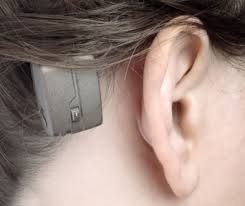
Bone conduction hearing aids are often used in cases where someone has a malformed ear with no ear canal, or has chronic ear infections that do not allow for the use of traditional hearing aids with ear molds. The bone anchored hearing aid, or the BAHA system, is surgically implanted and conducts sound through direct bone vibration.
The BAHA consists of a small titanium implant, an abutment, and a sound processor.
The sound processor can easily be snapped in and out of the abutment but allows for secure attachment.
Implantation is not recommended for children under the age of five because of the thickness and development of the skull. A BAHA Softband can be used for these children until they are able to undergo surgery. The Softband is an adjustable elastic band with a snap to fit the sound processor into.
Your child’s hearing technology should be checked daily, as young children may not be able to report problems with their listening device.
Eventually management and care of your child’s listening devices should become their responsibility, although support by you and your child’s school team may be required when your child first receives their hearing technology or if they are younger.
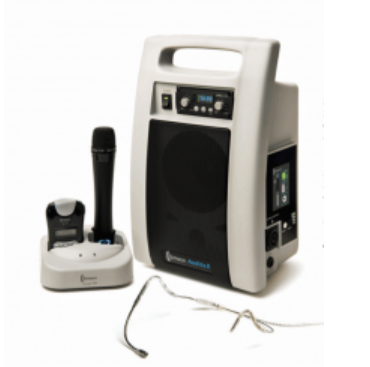
Classroom Audio Distribution Systems (CADS) (also known as FM/RM Systems)
Distance from the speaker, background noise, and reverberation of sounds within the busy classroom room can make hearing difficult for your child within their classroom. FM technology can be used in addition to the hearing aid(s) or cochlear implant(s) to help overcome these factors.
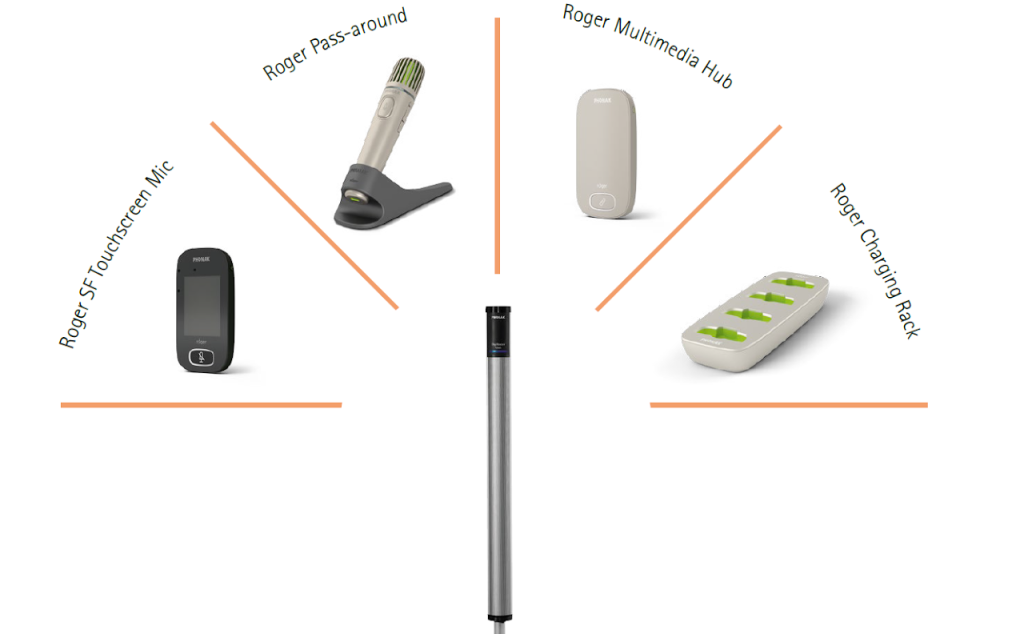
FM technology can be a personal FM system or a soundfield system. A personal FM system uses a transmitter, microphone, and receivers to send the teacher’s voice directly to your child’s hearing technology. The teacher wears a microphone and transmitter. The teacher’s voice can then be transmitted directly to your child’s hearing aids and/or cochlear implant, through an integrated receiver, or with a specialized adapter called a boot. Your child then hears the teacher as if the teacher were standing right next to him or her, overcoming the problems of distance and background noise. Daily listening checks of your child’s FM system are also recommended.
Soundfield FM systems use a microphone and transmitter to send the teacher’s voice to speakers in the classroom. Students with milder forms of hearing loss or unilateral hearing loss can greatly benefit from these types of classroom listening systems because the teacher’s voice is heard equally throughout the classroom and is louder than the background noise.
Your child’s audiologist will recommend the best type of listening device for your child based on his or her hearing loss and the classroom environment. Yout child’s Deaf and Hard of Hearing Teacher (DHH-IT) and your child’s school team can provide support your child regarding the daily use of the hearing aids and the FM system at school. Eventually management and care of your child’s listening devices should become their responsibility.
Care of Hearing Aids, Cochlear Implants and FM Systems
Hearing aids, cochlear implants and FM systems should be kept clean, dry, and away from heat sources. They should be worn during all waking hours, but care must be taken not to drop them on hard surfaces during handling or cleaning.
Over time, your child will learn to independently manage their amplification needs. If they are younger or when they first receives their new hearing technology, your child may require additional support.
It is important that the batteries in your child’s hearing aids or cochlear implants are checked regularly and that extra batteries are sent to school, just in case.
At home, practice with your child by having them change the batteries in their listening devices’ and assist in putting on their listening devices every day so they become more comfortable and independent in doing so. Remember, they eventually will need to be able to do this when you are not there with them at school.
Daily Care for the Hearing Aid
Your child’s hearing aids will last longer and work better if they are taken care of. Your audiologist can help you learn what you need to do.
Hearing aids need special care to work correctly. Your audiologist will show you how to check your aids and take care of them. Ask how you can get these tools:
- A listening tube
- A battery tester
- A forced air blower
- A drying container
Do listening checks. Listen to your child’s hearing aids every day. You can use a listening tube to make sure they sound clear. You want to make sure that there are no breaks in the sounds. You should listen for feedback, or a whistling sound, inside the aids.
Check the batteries. Batteries should up to 1 week. Check the batteries using a battery tester. You child will hear the best when their batteries are at full strength. Always keep spare batteries with your child. Store them in a cool, dry place. Batteries are toxic, so handle them carefully. Be sure to get rid of them properly.
Clean your child’s hearing aids often. Use a soft, dry cloth. Check for dirt and grime. Remove your child’s earmolds from the hearing aids to clean them with mild soap. Dry them carefully using a forced air blower. Do not use a hair dryer! This is too strong and can damage the aids. Be sure they are dry, then put them back on your hearing aids.
Keep your child’s hearing aids dry. Your child’s hearing aids will work best when they are dry. Use a drying container to keep moisture from building up inside the aids. Take the batteries out before putting your aids in the containers.
Avoid feedback. Feedback is the whistling sound that your child will hear from the hearing aid. It happens when sound comes out of the earmold and goes back into the microphone. Your child should not hear feedback if his or her hearing aid fit well. Reasons for feedback could include small earmolds or earwax in the ear canal.
Talk to your audiologist about what to do when you start hearing feedback. Turning the volume down on the hearing aid will cut down on feedback. But, your child will then have trouble hearing other sounds.
See your audiologist. You should have your child’s hearing checked on a regular basis. Your audiologist can check your hearing aid and fix any problems.
At home, it is also important to perform a daily listening check, to become familiar with what the aid(s) should sound like to recognize a problem quickly if one should happen and troubleshoot your child’s listening device. If there is a problem with their hearing technology, contact your child’s audiologist as soon as possible.
adapted from ASHA- Daily Care for the Hearing Aid
The Daily Listening Check
At home, it is also important to perform a daily listening check, to become familiar with what the aid(s) should sound like to recognize a problem quickly if one should happen and troubleshoot your child’s listening device. If there is a problem with their hearing technology, contact your child’s audiologist as soon as possible.
